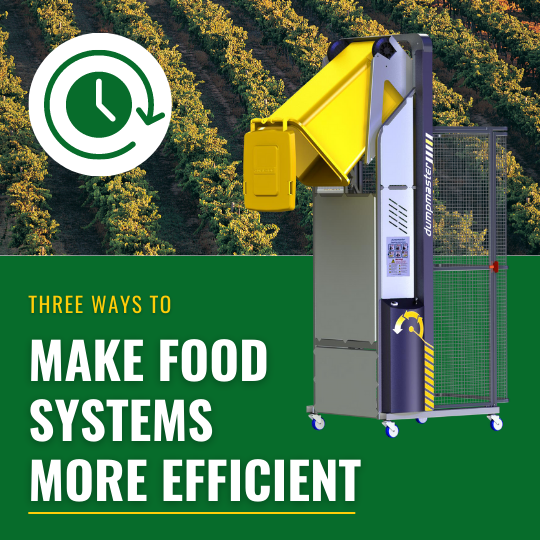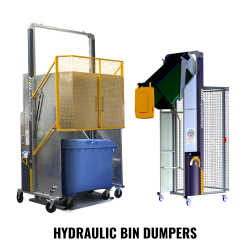We use cookies to make your experience better. To comply with the new e-Privacy directive, we need to ask for your consent to set the cookies. Learn more.
3 Ways to Make Food Systems More Efficient

As we strive to get ever more high-quality food products to even more markets, we'll need to improve efficiency every step of the way. The contemporary U.S. food system is incredibly complicated, but for our purposes, we can boil it down to three primary stops before reaching the consumer: farm production, wholesale warehousing, and direct-to-consumer sellers. Here are a few ways to tap into unused productivity at each of these important elements of the all-important food supply system:
1. On the farm, plan harvest flow for single-touch load handling.
Farmers can learn from the warehousing industry, where the common wisdom is to reduce the number of "touches" — discrete instances of handling a given item or load — to as few as possible.
The trick to keeping touches down for produce is to find ways for workers to lift, transport, and empty harvest bins without stopping to switch material handling equipment. All it takes is a lift-truck or tractor mounted with a Forward Bin Dumper.
This single device lifts fully loaded pallet bins with a safe capacity of more than 2000 pounds. With this set-up, farm staff can lift loaded bins from the field or orchard, transport them quickly to the packing house, and then empty produce gently onto sorting lines — all without switching equipment between tasks.
2. At the warehouse, choose highly adaptable material handling equipment.

Food and beverage warehouses must innovate constantly to handle an increasing range of diverse SKUs. In order to drive down capital investment costs, training time, and fleet-storage space, distributors are turning to material handling equipment that can be outfitted for multiple items.
Hydraulic Bin Dumpers from Solus Group lift and empty virtually any bulk food container, from boxes of fruit to drums of oil. Customizable cradles allow users to tailor Bin Dumpers to handle their products in their own packaging.
3. At the restaurant or grocery store, focus on source reduction of food waste.
According to the latest (2014) study from the United States Department of Agriculture, we lose 31 percent of the 450 billion pounds of available food we produce. (Other estimates place the figure closer to 40 percent.)
We throw most of that food away in our homes, where we lose 21 percent of the total supply. But a full 10 percent of that food loss occurs at the retail level. If you could somehow align product supply at grocery store with demand perfectly, then, retailers would see incredible savings.
In fact, source reduction of this sort is also the U.S. Environmental Protection Agency's most-preferred method of recovering food. This is the happy scenario in which what's good for the bottom line is also good for the environment.
There are other steps in the food supply system, of course. There are hops and skips and eddies. But, generally speaking, efficiency improvements in the above-three hubs could keep food costs down across the board while distributing profits more evenly to all stakeholders. When we make food systems more efficient, everyone benefits — and so does the planet.
References:
Committee on a Framework for Assessing the Health, Environmental, and Social Effects of the Food System; Food and Nutrition Board; Board on Agriculture and Natural Resources; Institute of Medicine; National Research Council; Nesheim MC, Oria M, Yih PT, editors. "A Framework for Assessing Effects of the Food System." NCBI. National Center for Biotechnology Information, U.S. National Library of Medicine, 17 June 2015. Web. 15 Aug. 2018.
"How to Prevent Wasted Food Through Source Reduction." EPA. U.S. Environmental Protection Agency, 25 Aug. 2016. Web. 15 Aug. 2018.
Lewis, Chris. "5 food and beverage technology trends." MMH. Peerless Media, LLC, 12 Mar. 2018. Web. 15 Aug. 2018.
Mittal, Anuj, Caroline Krejci, and Teri Craven. "Logistics Best Practices for Regional Food Systems: A Review." MDPI. Sustainability, 11 Jan. 2018. Web. 15 Aug. 2018.
"Trends in U.S. Local and Regional Food Systems." USDA. Economic Research Service, U.S. Department of Agriculture, Jan. 2015. PDF. 15 Aug. 2018.
